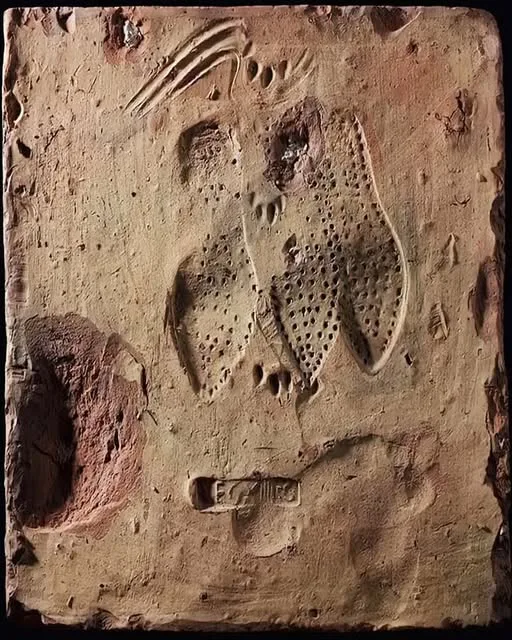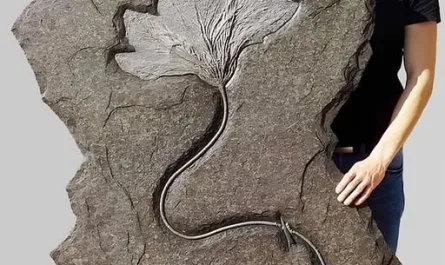Roman Tile from Carnuntum: A Snapshot of Daily Life
Unearthed in Carnuntum, Austria, this remarkable Roman tile offers a vivid glimpse into the daily life of a bustling Roman frontier settlement around two millennia ago. Discovered in what was once a key military and civilian hub along the Danube River, the tile bears an array of ancient imprints—finger lines, hobnail boot patterns, and a canine paw print—capturing fleeting moments of interaction with the wet clay. Marked with the official insignia of LEG(io) XIIII G(emina), a prominent Roman legion stationed in the region, this artifact now resides at the Landessammlungen Niederösterreich. As of July 2025, it serves as a tangible link to the Roman military and civilians who left their marks, preserving a slice of history for modern exploration.

Historical Context
Carnuntum, located near modern-day Petronell-Carnuntum and Bad Deutsch-Altenburg, was a vital Roman city and military outpost established in the 1st century AD. Serving as the capital of the province of Pannonia Superior, it housed up to 50,000 people at its peak, including soldiers from legions like LEG(io) XIIII G(emina) Martia Victrix, known for its role in the Roman conquest of Britain and its stationing in Carnuntum from 14 AD. The tile, likely crafted between the 1st and 3rd centuries AD, reflects the bustling activity of a legionary fortress and adjacent civilian settlement, where military infrastructure and daily life intertwined.
The LEG(io) XIIII G(emina)’s insignia, often featuring a Capricorn or lion, signifies its presence and authority, while the imprints suggest the tile was made or handled during its drying phase, a common practice in Roman tile production using local clay.
The Tile’s Imprints: A Window into Roman Life
This terracotta tile, measuring approximately 30×30 centimeters, is a treasure trove of unintentional records:
- Finger Lines: The delicate grooves left by human fingers indicate someone pressed or smoothed the wet clay, possibly a worker shaping or inspecting the tile in a legionary kiln.
- Hobnail Boot Patterns: The studded imprints from caligae, the standard Roman military sandal, suggest a soldier walked across the clay, perhaps during construction or casual movement within the fortress.
- Canine Paw Print: A dog’s paw mark adds a touch of everyday life, hinting at the presence of pets or guard dogs among the troops or civilians, a common sight in Roman camps.
These impressions, preserved as the clay hardened, offer a rare, personal glimpse into the routines of Roman Carnuntum, where military discipline met the mundane.
Craftsmanship and Purpose
Roman tiles like this one were mass-produced for roofing, flooring, or wall construction, often stamped with legionary marks to denote ownership or quality control. The LEG(io) XIIII G(emina) insignia, impressed with a die or stamp, ensured the tile’s association with the legion, reflecting their role in building infrastructure such as barracks, baths, and the amphitheater that once held 13,000 spectators. The tile’s firing in a kiln, likely near the legionary workshops, hardened these imprints, preserving them for nearly 2,000 years.
The presence of such detailed marks suggests the tile was left exposed before firing, a practical oversight that inadvertently created an archaeological goldmine. Carnuntum’s kilns, active from the 1st to 4th centuries, produced thousands of tiles, some of which are displayed alongside this specimen at the Landessammlungen Niederösterreich.
Cultural and Historical Significance
This tile bridges the military and civilian worlds of Roman Carnuntum. The LEG(io) XIIII G(emina), famed for its victories under Emperor Claudius, left a lasting imprint on the region, with archaeological evidence of their camps, temples, and civilian villas. The hobnail boots evoke the legionaries’ disciplined marches, while the paw print hints at the humanizing presence of animals, possibly mascots or companions. Together, these marks reflect a vibrant community where soldiers, craftsmen, and families coexisted.
The tile’s preservation at the Landessammlungen Niederösterreich, a regional museum in Lower Austria, underscores its value as a cultural artifact. It complements findings from Carnuntum’s extensive excavations, including the amphitheater and Heidentor (Pagan Gate), offering insights into Roman engineering and daily life.
Preservation and Modern Interest
Excavated in the 19th century during systematic digs of Carnuntum, the tile has been carefully conserved, with its fragile surface protected from further wear. As of July 2025, the Landessammlungen Niederösterreich displays it in a climate-controlled exhibit, alongside interpretive panels detailing its imprints and legionary context. The site itself, now an open-air museum, attracts visitors with reconstructed Roman buildings and events like the annual Roman Festival.
Posts on X highlight its charm, with users calling it a “time capsule” and marveling at the “doggy footprint from 2,000 years ago,” reflecting public fascination. Challenges include preserving the tile’s delicate clay structure against humidity and tourist handling, addressed through limited touch access and digital replicas.
Challenges and Future Prospects
The tile’s age poses preservation risks, with potential cracking from environmental shifts. Future research may use 3D scanning to analyze tool marks or chemical residues, shedding light on production techniques. Collaborative studies with Austrian and international archaeologists could also explore links between Carnuntum’s tiles and those from other legionary sites, enhancing our understanding of Roman supply chains.
Conclusion
The Roman tile from Carnuntum, with its finger lines, hobnail boot patterns, and canine paw print, is a remarkable artifact that encapsulates a moment of daily life in a 2,000-year-old frontier town. Bearing the LEG(io) XIIII G(emina) insignia, it connects us to the legionaries and civilians who shaped Carnuntum, preserved today at the Landessammlungen Niederösterreich.





